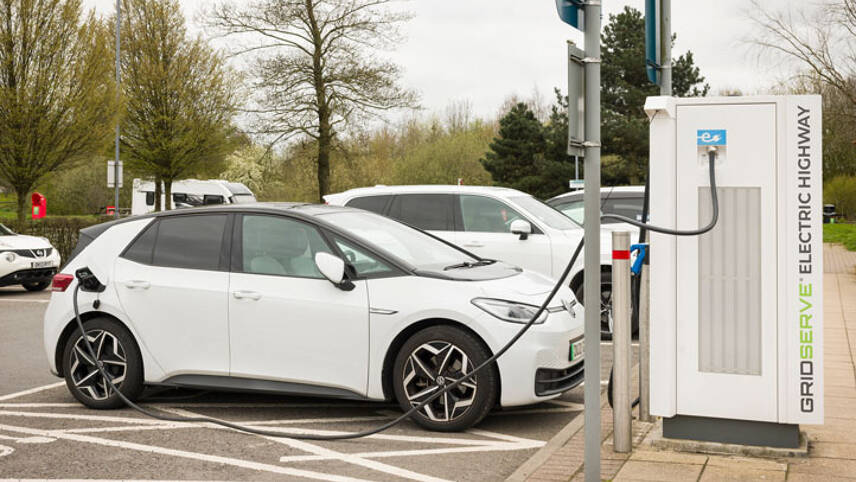Register for free and continue reading
Join our growing army of changemakers and get unlimited access to our premium content

Pictured: Gridserve chargers on the M1 motorway
Transport Secretary Mark Harper confirmed the move in a speech at COP28 in Dubai, stating that the funding from Whitehall coffers will cover a portion of the costs of upgrading the electricity grid at 10 chosen motorway service areas in England.
By ensuring that ultra-rapid chargers will not have a long wait to connect to the grid due to capacity restraints, the DfT is hoping to act as an enabler for private sector investment in the chargers themselves.
The DfT is working with National Highways to identify which areas are most in need of – and most suitable for – grid upgrades to support additional charging. It is consulting for ten weeks to choose the locations.
The DfT has emphasised that this is a pilot, but that it is gathering evidence to “inform the design of a full fund”. Harper called the pilot a “starting point” which “sends a message to consumers and industry that we are investing wisely and rapidly to grow the future of transport in the UK”.
Between 2022 and 2030, the UK Government’s vision is to increase tenfold the number of publicly available electric vehicle (EV) charging points.
A significant update to the 2022 plan was announced in early 2023, clarifying the DfT’s position on supporting ‘smart’ chargers that enhance efficiency. There is a focus on charging at work and home through to 2025 and on public charging thereafter.
EV manufacturing
Prime Minister Rishi Sunak recently delayed the UK’s ban on new petrol and diesel car and van sales from 2030 to 2035.
Parliament voted earlier this week to approve the new mandate. Manufacturers wil be subject to new targets from 1 January 2024. By the end of the year, they will need to ensure that at least 22% of new cars and 10% of new vans to be zero-emission remains unchanged. If businesses cannot meet this requirement, they will need to purchase credits off of peers who are out-performing.
For reference, 20% of all new car and van sales in August 2023 were electric vehicles (EVs), so this is not a significant uptick for most auto manufacturers in the near-term.
Also in January, the EU was set to activate new post-Brexit ‘rules of origin’ tariffs for EV manufacturers. This would have imposed a 10% levy on imported cars and batteries.
But British automakers received a boost on Wednesday (6 December) when the European Commission offered to delay tariffs for three years, through December 2026.
Commissioners are badging the delay as a “one off” and have stated it is on the table due to unforeseen challenges in battery supply chains. These include delays and disruptions due to Covid-19 and to extreme weather.
Trade body the Society of Motor Manufacturers and Traders (SMMT) is imploring the UK Government to support the EU Government’s “pragmatic” proposals to avoid an imminent “cliff edge”.


Unless the electricity supply to the chargers is supplied by non-fossil sources, nuclear, hydro etc., the resultant CO2 emissions will be largely unaffected, will they not?
The guiding precept in energy matters is “you can’t get owt for nowt”.
Sorry.